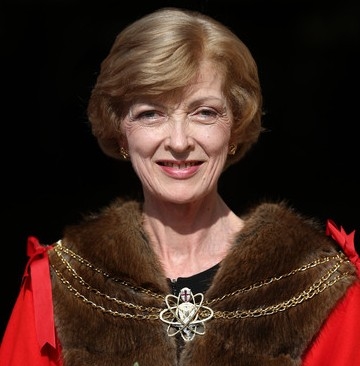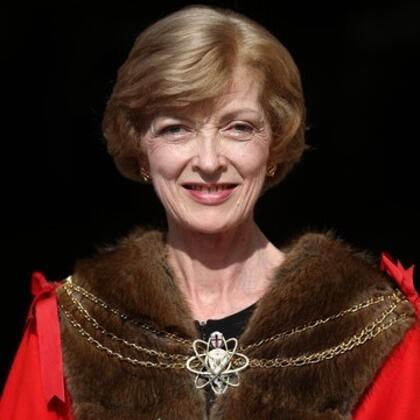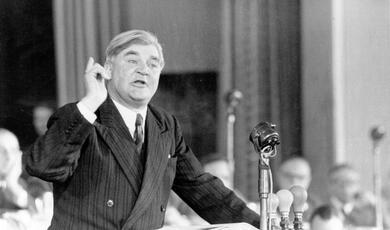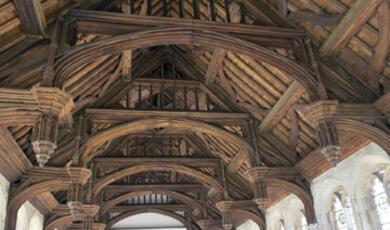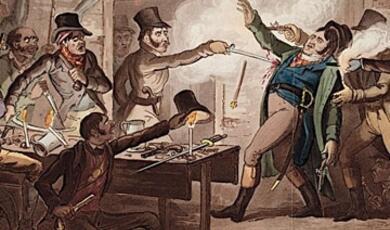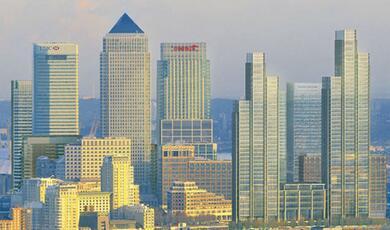30 January 2014
Tomorrow’s Cities
The Rt Hon Fiona Woolf,
Lord Mayor of The City of London
For over four hundred years the Lord Mayor has had the opportunity to influence the intellectual life of the City as President of Gresham College, in today’s case through a lecture and a symposium. I’d like to nudge our intellectual attentions towards one of my chosen themes for the year, Tomorrow’s Cities, in particular measuring them.
Perhaps some of you are aware that my day job is being an energy lawyer. You’ll realise that as a lawyer I’m obliged to charge for my time. Today things are on the other foot. I’d like to give you thirty minutes of my time to set out a few thoughts prior to this afternoon’s ‘convivial conversation’. By the way, although I’m taking your time, that doesn’t mean you’re allowed to charge me!
1. Why do cities matter?
Cities are factories of the mind, driving innovation, creating wealth, and providing opportunity. Sir Terry Pratchett’s Discworld fantasy series features a London doppelgänger, Ankh Morpork. Sir Terry sums up his faux London well:
“As full of life as an old cheese on a hot day,
As loud as a curse in a cathedral,
As bright as an oil slick,
As colourful as a bruise
And as full of activity, industry, bustle and sheer exuberant busyness as a dead dog on a termite mound.”
When you are asked to think about measuring or characterising cities, what do you think about? Population, geography certainly and maybe also height, speed, pollution, opportunity, danger?
I think about people. People in cities matter, and the wealth created by citizens together is what makes cities valuable.
2. Why does measuring cities matter?
Gresham College was the birthplace of the Royal Society, and a Fellow of the Royal Society, Sir William Thomson, better known as Lord Kelvin, starts our clock ticking:
“When you can measure what you are speaking about,
and express it in numbers, you know something about it”
[Lord Kelvin, Electrical Units of Measurement, Volume 1, 1883-05-03]
We are all familiar with modern management-speak:
“What gets measured, gets done”
“We manage what we measure”,
“We value what we measure”, or
“To measure is to know”.
But for Lord Kelvin, measurement creates the data from which information and knowledge emerge. I realise that measurement equally has its dangers.
As Boyle points out so well in his book, The Tyranny of Numbers, we are often “exact about some of the least interesting things, but silent on wider and increasingly important truths.” [Boyle, 2000, page 13] But measurement remains crucial to our civilisation.
Alfred W Crosby is a distinguished historian who attempts to explain why pendula of power swing. One of his books, The Measure of Reality: Quantification and Western Society, 1260-1600, attributes European cities successes to their invention of measurement - an explosion of quantification in numerous fields ranging from time, space, mathematics, visual perspective, music, painting, and even bookkeeping.
Measuring cities is tough. In the UK, a city can be defined by its historic heart, its Royal Charter, its diocesan cathedral. London has two notable cities, Westminster and the City of London. We have twin cities such as Budapest. Many cities - London and New York spring immediately to mind - have burst their boundaries and expanded by swallowing older villages and boroughs.
Maps are commonly pulled out to illustrate one or other aspects of cities, to give them outlines.
• A city might be defined by its government’s ability to provide security to citizens, its control of territory, say the city walls of London or Rome’s seven hills. Yet a city’s defence may extend well beyond the walls or hills, spill over its islands or river banks.
• A city can be defined by planning, who has the right to specify what can and can’t be built, done or used on such and such property.
• A city can be defined by its ability to tax citizens. Yet many cities, such as London, have incomplete abilities to tax, while others, such as Los Angeles, are unable to tax much of their greater metropolitan area.
• A city can be where people work, forcing us to analyse economic value-added, travel time and commuting networks.
• A city can be mutual dependence on a host of infrastructure, air, land, & sea transportation, water, energy, waste, communications.
Our City of London residential population of a mere 7,500 is swelled by a third of a million commuters who travel here to work every day, with a catchment extending from Dorset to Manchester. “Even though the municipal district of Chongqing [China] has a total population of more than 30 million inhabitants, fewer than 6 million actually live in Chongqing city proper. Depending on which classification is used, Chongqing is sometimes listed as the world’s largest city and, in other cases, does not even appear in the top rung of urban population rankings.” [Bloom et al, 2010, pages 2-3]. Some 1 billion people in the world may live largely undocumented in slums and favelas.
How do we measure tolerance, diversity, innovation, resilience?
3. What happens if we get cities and their measurement wrong?
Measurement matters.
In 1800, only three percent of the global population lived in cities and more people died in London than were born here. Only one city, London, had more than a million people; largely because of its unique renewable transport system, the tidal Thames, it was the only city able to feed a million people before railways.
By 1900, fourteen percent of the world lived in cities, by 1950 thirty percent, and we crossed over the 50% mark in 2008 and have over 400 cities with more than a million people.
Demographers estimate 70% by 2050. Urban population growth over rural is twofold, not just importing rural people, but also creating more opportunities for wealth creation. This has been the biggest city trend in the last century.
I hesitate to point to one cause of this rapid growth, but it might well be our starting to control infectious diseases around the end of the 19th century, combined with railways, increasingly better food storage and nutrition. This concentration is starting to make our definition of cities easier – cities are where people live.
To help we need to measure, but it’s not easy. Take basic comparisons of population density. Central New York is three times denser than central London, but London is overall 50% denser than New York [http://www.demographia.com/db-lonlanypar.htm]. How do we measure the undocumented, the ‘black’ or ‘grey’ economies, wealth, poverty?
Last year The Economist argued that trying to revive places like Hull, Middlesbrough and Wolverhampton with lots of public money was foolish. People from Hull pointed out that Hull’s city boundary is tightly drawn, so wealthier settlements on its fringes are excluded, and Hull appears poorer than it really is. Other cities, such as Leeds, have looser boundaries that take in affluent villages. How can we make informed comparisons to help us make better decisions if we don’t get our measures straight?
How do we protect cities from fire, flood, disease, climate change, economic crisis, social and political upheaval, if we can’t measure the basic data we need to make sensible decisions? We can wind up under-providing, leading to poverty, disease, and ignorance, or over-providing, wastefully using our very scarce resources.
4. Metaphors
We often count and classify when we should measure through metaphor. I’ve heard metaphors comparing cities to communities, marketplaces, machines, energy processing engines, living cells, places of worship and, even cities as musical harmony or discordance, symphony orchestras or jazz bands.
My preferred metaphor is the city as a clock. Clocks are a particularly strong metaphor. Long Finance itself was inspired by the Long Now project to build a self-sustaining clock that would last 10 millennia and give people a sense of time.
When London was founded, sundials, clepsydra (water clocks), or candle clocks were the best technology available. Let me take you on a Dickensian hopscotch through the ghosts of cities and clocks past, present, and future.
Clocks and their bells and towers were enormous social projects, proliferating throughout Europe somewhere around 1270. Salisbury Cathedral has hosted a clock since 1306, and its current one, dating from 1386, is the oldest working clock in England. Cockneys are those born within the sound of the Bow bells and London has the “Oranges and Lemons” rhyme for several church bells. Our oldest business is the Whitechapel Bell Foundry for church bells dating perhaps to 1420, which cast the Liberty Bell and Big Ben. Cities with clocks and bell towers had a beat – a beat of commerce. We could both meet in the market at noon, not some vague idea of mid-day. We could exchange ideas. Efficiency and innovation increased markedly. Cities achieved better economies of scale.
Starting with the Weavers in 1155, Guilds focused on measurement and quality – the pendulum of trade in the City swung to the beat of volumes and lengths, weights and hall marks.
Which forces me to mention the Worshipful Company of Clockmakers, founded in 1631, whose motto underscores our metaphor – “Tempus Rerum Imperator”, time is the commander of all things. To see the Ghost of Cities Past, we can visit the wonderful clockmakers museum in the Guildhall and explore how a world-beating (sic) industry thrived, one which gave us longitude, dominion of the seas, and manufacturing precision.
Today we trade in less than ten milliseconds which helps to keep the City at the top of the Global Financial Centres Index [Mainelli, Michael, Yeandle, Mark and Danev, Nick, “Global Financial Centres Index”, Z/Yen Group and Qatar Financial Centres Authority, 2007-2014, http://www.longfinance.net/fcf-gfci.html] but the clock is ticking for slow cities. My law firm was simultaneously commissioned in 1991 to advise on both the Hong Kong International Airport and Terminal 5. Hong Kong opened in July 1998, seven years later. At the smaller Terminal 5, planning permission didn’t arrive for another three-and-a-half years in November 2001, construction started in 2002 and it opened in 2008. Hmm.
The Ghost of Clocks Future are wound up inside our networks. The defining technology of our generation is the internet. At the heart of every computer lies a clock. Every network has a beat. The Ghost of Clocks Future resides in the network, and the network resides in clocks.
Professor Albert-László Barabási at Notre Dame University sees our future in networks, if nothing else because of resilience and robustness. “Most systems displaying a high degree of tolerance against failures share a common feature: Their functionality is guaranteed by a highly interconnected complex network.” [Barabási, page 111] Cities are, somewhat contrary to pub discussions, greener than rural areas when populations are compared on carbon, water, waste, or energy footprints. Economies of scale help reduce our impact. Our dense populations are smarter about resource usage and the triple bottom lines of commerce, social well-being, and the environment.
5. Measuring Up – The Power of Data, Information, and Knowledge
So, on what will cities depend in the future? Glaeser [1994] challenges the view that accumulation and labour are the key factors in economic growth, emphasising rather human capital and the flow of ideas that urban environments foster.
I believe cities need to follow companies in adopting network models and flat structures over hierarchies. There are two competing approaches to getting smart I term the Wizard of Oz and the Hippie Entrepreneur.
The Wizard of Oz sees smart cities as a super connected, super centralised system, in which the Mayor hides behind a green curtain, seeing all and controlling all in order to ensure the smooth running of the metropolis.
The Hippie Entrepreneur believes that data wants to be free, and smart cities give free access to all civic data, so that a thousand innovative flowers can bloom.
I do not know which will prevail and I could argue for a bit of both, but all of the great networking projects are collaborative. It’s no surprise to me that ‘open source’ software drives most of the internet. Nor that peer-to-peer technology, when we get it going appropriately, is so strong.
E.E. Cummings tells us, “believe me, dear, clocks have enough to do”. I’d like to leave you with a final, semi-liquid metaphor, blending cities, clocks, commerce, and networks - cities as data hydrants. Cities have always been places that generate data, in vast quantities. Data is the ultimate renewable city resource. Cities are places where people get the measure of things. Data ignites ideas. The Royal Society could only have been founded in a city.
The intense clustering in cities presents urban dwellers daily with more opportunities and decisions than some rural folk might have in a year. However, these opportunities depend on a common weal of ‘data’. Peter Head refers to our creating “collaborative intelligence” which we can use to create “collaborative consciousness” and achieve “collaborative change” where it is needed.
We have seen great examples of how freeing data for widespread use transforms our lives – maps, music, books, films, courses, directories, etc. To avoid being over-focusing on the internet, I’d highlight another information hydrant for all of us, the United States Department of Defence freeing-up access to GPS, the global positioning system, which has changed everything to do with transportation.
Data is the irrigator of ideas. A place with a lot of data becomes the transaction hub of choice. We need data for smart grids of food, energy, water, transportation, pedestrian movements, air quality, and waste. We need smart data to provide the raw materials for Big Hypotheses we can test and Big Theories we can deploy to meet our challenges. ‘Big Data’, the use of computing power to provide automatic insights into large or complex data sets, is the new Big Ben.
Transport for London created a data hydrant for trains and buses. A number of innovative London firms played with the data and turned it into information on the smart phones you have in your pockets - hopefully switched off - today.
Freeing data made London a global centre for software development of public transport apps.
How we gather and exchange data might a city. Our new city wall is a data wall. Our new reservoir is our data store. Perhaps on entry to a city we contract to provide movement information from our smart phones to help transport planning – a mobile app passport. If I build a block of flats, I must provide ways of sharing energy, occupancy, or waste information with the city, which it anonymises, stores, and then shares more widely. I can link up with neighbours to consider new power or water treatment plants because I have the data on local consumers, their needs, their usage patterns.
There are liberty and security issues, certainly, but more open data could transform London. Perhaps we should be freer with Land Registry data. Perhaps we should be putting obligations on planning approvals for sharing data. Perhaps utilities should have sharing obligations in exchange for their quasi-monopolies.
Unless we collaborate on data, we can’t compete in the long-term. I wonder, in closing, if modern cities should shift metaphors from clock towers and bells, to sharing and drinking from their data hydrants, moving along a path from data to information to knowledge, and, dare I say it, from there, to wisdom.
Thank you.
© The Rt Hon Fiona Woolf, 2014
REFERENCES
1. Barabási, Albert-László, Linked, Penguin (2003).
2. Bloom, David E, Canning, David, Fink, Günther, Khanna,Tarun and Salyer, Patrick, “Urban Settlement”, Working Paper Number 2010/12 (February 2010) http://www.wider.unu.edu/stc/repec/pdfs/wp2010/wp2010-12.pdf
3. Boyle, David, The Tyranny of Numbers: Why Counting Can’t Make Us Happy, Harper Collins (2000).
4. Crosby, Alfred W, The Measure of Reality: Quantification and Western Society, 1260-1600, Cambridge University Press (1997).
5. Epstein, Stephen A, Wage Labor and Guilds in Medieval Europe, University of North Carolina Press (1991).
6. Glaeser, Edward L, “Cities, Information, and Economic Growth”, Cityscape, Volume 1, Number 1, Proceedings of the Regional Growth and Community Development Conference November 1993, Washington, D.C. (August 1994), pages 9-47. Published by: US Department of Housing and Urban Development Article Stable URL: http://www.jstor.org/stable/20868363
7. Quinn, Stephen, Walters, Timothy and Whiteoak, John, “Tale of three (media) cities”, Australian Studies in Journalism, Volume
8. Mainelli, Michael, Yeandle, Mark and Danev, Nick, "Global Financial Centres Index", Z/Yen Group and Qatar Financial Centres Authority, 2007-2014, http://www.longfinance.net/fcf-gfci.html
12 (2003), pages 129-149 - http://dro.deakin.edu.au/eserv/DU:30016823/quinn-ataleofthree-2003.pdf
FURTHER INFORMATION
1. Financing Tomorrow’s Cities - http://www.longfinance.net/tomorrow-s-cities.html
2. United Nations, Our Common Future, Chapter 9: The Urban Challenge
http://www.un-documents.net/ocf-09.htm
3. Florida, Richard, and Gates, Gary, “Technology and Tolerance: The Importance of Diversity to High-Technology Growth” (2001) -
http://www.urban.org/UploadedPDF/1000492_tech_and_tolerance.pdf
4. Larsen, Kurt – “Learning Cities: The new recipe in regional development - Kurt Larsen” (2011) - http://eurolocal.info/sites/default/files/OECD%20Observer-Learning%20cities-the%20new%20recipe%20in%20regional%20development.pdf
5. Villa, Nicola, and Mitchell, Shane, “Connecting Cities: Achieving Sustainability Through Innovation” (2009) - http://siteresources.worldbank.org/INTURBANDEVELOPMENT/Resources/336387-1256566800920/6505269-1268260567624/Villa.pdf


 Login
Login
